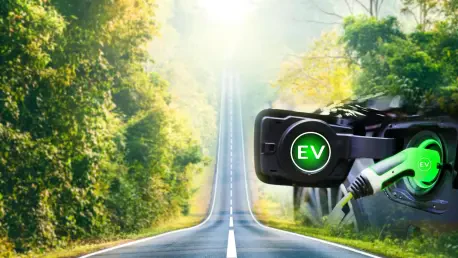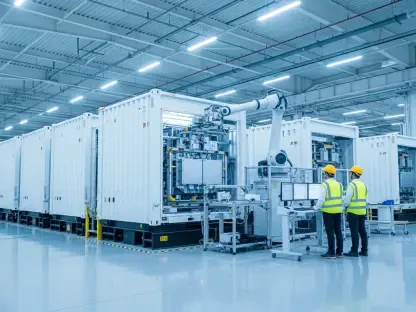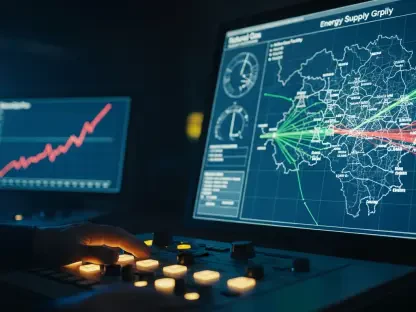As the energy landscape evolves, integrating electric vehicles into power grids emerges as a promising solution to tackle energy challenges. In a significant step forward, MyWheels in the Netherlands is introducing grid-connectable electric vehicles (EVs) equipped with vehicle-to-grid (V2G) technology. This innovation allows electric cars to store energy and provide it back to the grid during times of high electricity demand. The initiative involves the addition of 500 Renault electric vehicles to their fleet, marking the largest V2G car-sharing scheme in Europe and reflecting a growing trend towards utilizing advanced technologies to enhance power grid stability. Recent energy-related incidents across Europe, such as blackouts in Spain and Portugal and acts of sabotage against power infrastructure in France, have underscored the importance of V2G solutions in mitigating the fluctuations inherent in energy supply and demand. The focal point of this ambitious project lies in Utrecht, with an estimated cost of 100 million euros, exemplifying a pivotal development in energy management and showcasing the Netherlands’ leading role in this innovative shift.
Advancements in V2G Technology and Market Growth
The introduction of V2G technology within electric vehicles represents a transformative milestone in energy management, as it facilitates a two-way interaction between EVs and power grids. This capability not only allows electric cars to serve as energy storage units but also enables them to modulate the supply of electricity during peak and off-peak hours. As the V2G market expands, it is projected to reach a valuation of $3.4 billion, signifying substantial growth and reinforcing the ongoing global transition towards electrification and renewable energy sources. This trend is largely influenced by progressive energy policies, especially those adopted by countries like the Netherlands, which actively embrace technological advancements to support sustainable practices.
The MyWheels initiative is a testament to the practical application of V2G technology, highlighting the roles of key stakeholders and demonstrating the strategic steps needed to integrate EVs into existing energy frameworks. The Netherlands’ proactive approach to energy challenges paves the way for other nations to consider the benefits of V2G systems in stabilizing power grids and enhancing overall resilience. While the concept of V2G technology is promising, the path to widespread implementation encounters challenges, including the need for standardizing systems across various manufacturers to create a cohesive operational infrastructure. The potential of EV fleets as robust energy storage solutions represents a significant leap toward greater grid stability and reliability.
Anticipating Challenges and Future Directions
Despite the alluring prospects of V2G technology, the journey to fully realize its capabilities poses certain hurdles. Chief among these challenges is the creation of uniform standards and protocols across differing EV manufacturers and power grid operators. This standardization is crucial for ensuring seamless integration and maximizing V2G benefits. Moreover, the infrastructure required for efficient V2G operation demands significant investment and regulatory support to facilitate widespread adoption, indicating a need for collaboration between industry stakeholders and governmental bodies.
The substantial investment in V2G systems underscores the global momentum towards sustainable electrification, hinting at profound implications for future grid infrastructure developments. The anticipated growth in the V2G sector reflects a broader shift in mindset, as energy policies increasingly prioritize renewable resources and innovative solutions. Experts believe that overcoming these initial challenges can unleash the transformative potential of V2G technology, allowing electric vehicles to play a vital role in stabilizing power grids and addressing energy disparities.
Looking Ahead: Electricity Grid Stability and EV Adaptation
As the energy landscape shifts, the integration of electric vehicles into power grids stands out as a potential solution to address energy issues. A breakthrough initiative in the Netherlands, led by MyWheels, is advancing this concept by introducing electric vehicles (EVs) with grid-connectable capabilities, specifically vehicle-to-grid (V2G) technology. This innovation enables EVs to store and then feed energy back to the grid at peak demand times. MyWheels is set to incorporate 500 Renault EVs into its fleet, forming Europe’s largest V2G car-sharing program and signaling a move towards using superior technology for grid stability. Recent disruptions, such as blackouts in Spain and Portugal and sabotage incidents in France, highlight the crucial role V2G can play in stabilizing energy supply fluctuations. Centered in Utrecht, this ambitious project, with a projected cost of 100 million euros, represents a significant milestone in energy management, positioning the Netherlands as a forerunner in adopting these innovative solutions.









